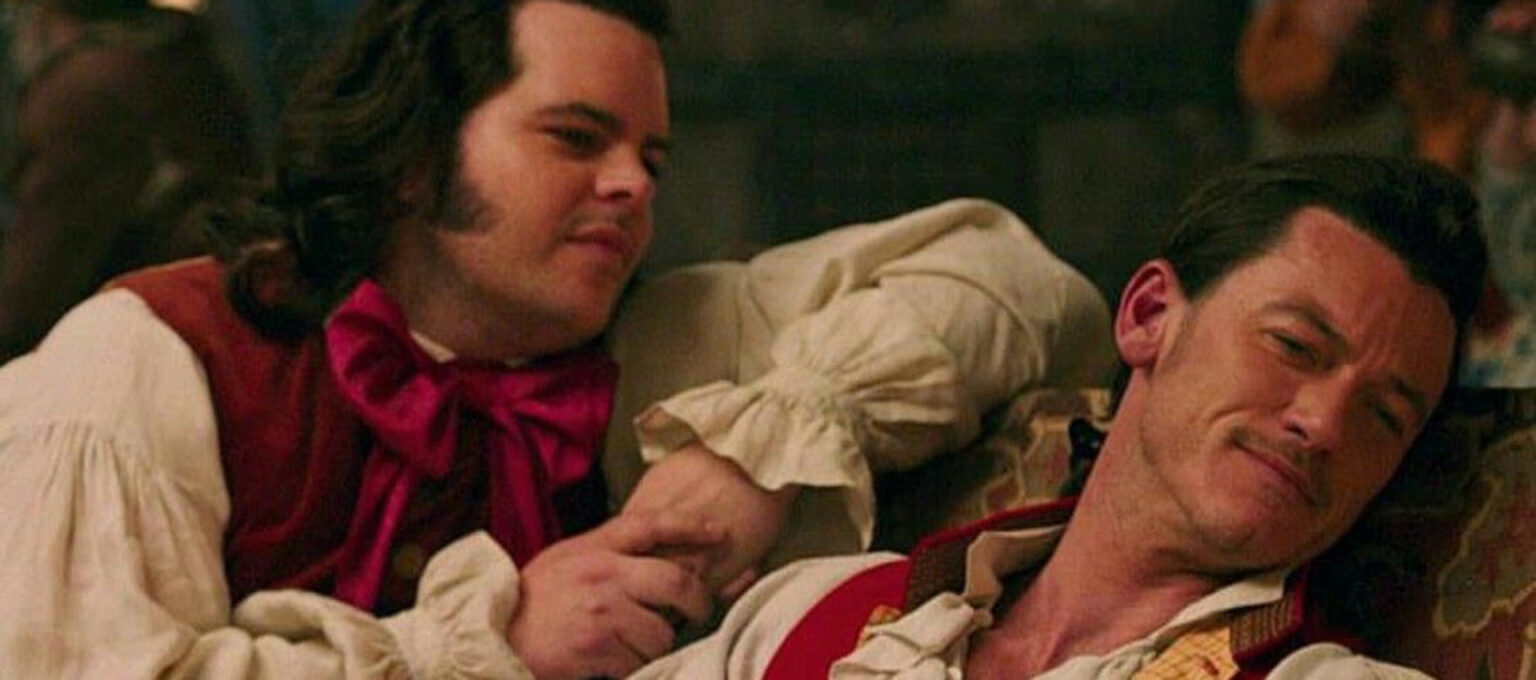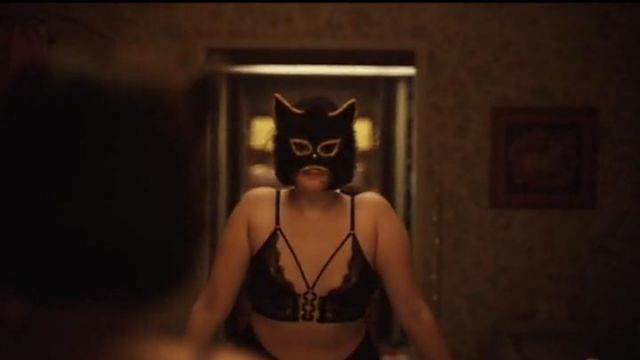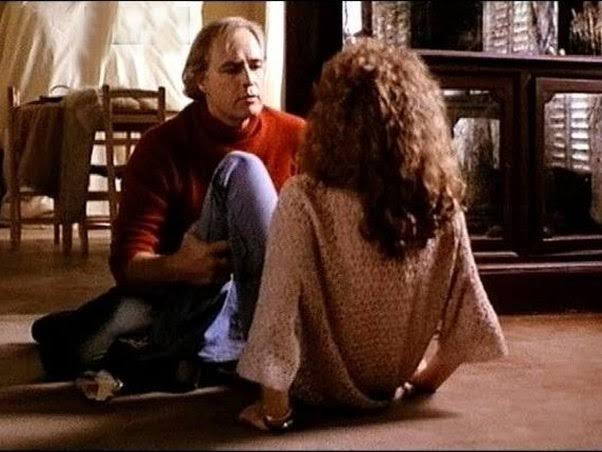The Portrayal of Sex Scenes in Media
For decades the media has been a fundamental element of popular culture and is one of the most subtle or profound influences of our understanding of what sexuality is and what gender role relationships are. It is not something new, to say that sex is used to sell, this can be seen in adverts, films, series and is intended to attract the eye of viewers. However, the media can formulate imaginative scenes with a certain degree of fantasy in order to make sexual encounters more aesthetically pleasing to the public, and sometimes this fantasy representation can contribute to misconceptions about intimate relationships that sometimes have a bias in which women are objectified.

In the last 30 years, have increased considerably the inclusion of sensual scenes, explicit or not, in the media. This can be explained, to some extent, by the natural changes that society has undergone over the years in relation to the understanding of sexuality and its taboos, with more representations of these issues. This has shown to be a green light for producers to feel more comfortable to add content with these themes and opened up a new market to be explored. In parallel to this, streaming services have been gaining more space and for being a paid service, has more autonomy to produce content for certain genres than traditional media.
The erotic tone that permeates the art is not a recent phenomenon, since the Classical Antiquity until the modern age, naked bodies and sensual scenes have been explored by all kinds of artists. Artistic expression is not only a form of language, but also a means of communication which allows artists to project, objectively or not, their ideas and thoughts, with the intention of manifesting, whether on the screen of a painting or film, an emotion that words alone may not be able to express entirely.
Restricting sexual content in the media is a controversial topic and an ongoing debate. Intimate relationships without the purpose of reproduction are something natural for many people, even so, in a society, different individuals may have different convictions about exposing this content in the media. Indeed, two lines of debate arise. On the one hand, there is a concern to restrict or even ban these contents, while on the other hand, there is a view that this exposure can help young people to understand and feel represented about their sexuality. As a result, nowadays, the audience has more power of choice to decide which content they will consume or not, in addition to the fact that both streaming platforms and broadcast television warn about adult and violent content that may be sensitive. In this sense, the discourse on controversies around sexual content in the media will not be ended or solved through censorship.
Which scenes are most targeted?
Although homosexuality has been decriminalized in several countries, it is undeniable that to this day the representation in different media of non-heterosexual and non-cis gender people often receive a more negative reaction than their heterosexual counterparts, especially in intimate scenes, explicit or not. This is evidently a reflection of established and normalized homophobia in society.

The entertainment industry has shown a supposed acceptance and has increased the presence of the LGBTQ+ characters, however, over the years this representation has been accompanied by stereotyped characters serving as comic relief or villains.
This is an effect of the Motion Picture Production Code or as it is better known, the Hays Code, a series of rules adopted by American studios to regulate audiovisual productions. This manual was applied during the 30’s to mid 60’s and was intended to censor certain content that was considered immoral and inappropriate. In this sense, for a film to be exhibited and distributed, producers and directors needed their scripts to conform to these norms. Thus, scenes of nudity, insinuations of adultery, behavior seen as vulgar, references to homosexuality, among other topics, could not be portrayed. If the film was not approved, they could be banned or have scenes modified and censored.
Nowadays, films and dramas often contain sexually charged conversations, jokes and scenes of kissing and heterosexual sex, sometimes even free of charge. In contrast, the slightest indication that a character may not be straight or even when a same-sex kissing scene is depicted, they are more likely to receive harsher criticism. In addition to being enough material to suffer pressure from conservative groups, labeling it as “too explicit” or “inappropriate for children” is often censored or minimized.

This ambiguous relationship in how LGBTQ+ characters are portrayed is not beneficial just because there are LGBTQ+ people present in the media. In the award-winning 1991 film the Silence of the Lambs, the character Jame Gumb, known as Buffalo Bill, is a serial killer who murders women and skins them so he can make a “woman suit”. Jame is presented as a mentally ill person and his sexuality and gender are linked to the murders. Even if it was not the intention of the film, the approach and construction of this character reinforces stigmas and fears regarding transsexuality.
Despite this, the LGBTQ+ community resisted and increasingly managed to achieve greater prominence not only in front of screens with complex and less stereotyped plots but also in production. This is due to more LGBTQ+ people are at the forefront of projects, such as the Spanish director and screenwriter Pedro Almodovar. Since he started his career in the late 1970s, he has stood out for maintaining an aesthetic of vibrant colors and controversial themes involving sexuality, religion and a strong female role. Still, this new scenario was conquered through debates and protests, and even so, it is a space that continues in constant discussion.
Unrealistic Expectations
The current media scenario is complex due to the new forms of communication that are rapidly evolving. A sector that has been transformed is the music industry and when we analyze the presence of sexual content in the mainstream media, we soon realize that the music business is increasingly showing nudity and eroticism, especially in music videos, lyrics, clothes and choreographies.
This phenomenon is not new and occurs in industries in different countries, however, this hyper-sexualization occurs mainly in women. At first, this sensual manifestation can be analyzed as a way for women to assume the autonomy of their bodies and show empowerment. At the same time, this sexualization is also used by the industry as a means of objectifying female bodies and fantasizing about a fetish. This can be noted by the prevalence of the male gaze in music videos, a heterosexual view that projects a male viewer onto the audience, reflected by camera angles and editing highlights. Indeed, this type of representation can normalize an idealized and fetishized view that women are available purely for male pleasure.
Another point to consider is which body types the media prefers to promote. It is common to see, mainly in movies and TV shows, a predilection for certain standards by conventionally beautiful, thin and young people. The constant broadcasting of these same images can feed an idealization of how the perfect body would be and this can cause negative effects in many people of non-adequacy.
Teen Roles

Adults playing teenagers in movies is common practice in the entertainment industry. When studios and producers decide to work with children and teenagers they know they need to be twice as careful and follow certain legal rules in order to protect and provide a safe environment for young people. As a result, several countries establish laws for the artistic work of minors, such as the number of hours allowed on set, respect for school activities and, above all, the censorship of scenes with sexual content. Therefore, many productions prefer to hire adults as the have more availability and less restrictions to deal with intimate scenes. While there are practical reasons for using adults in films and teen dramas, it can lead to many problems of authenticity and stereotyping, but most importantly it can contribute to the sexualization of teenage characters.
Working with adult actors can help avoid potential problems. In the film Grease (1978), both protagonists played teenagers, however, John Travolta was 24 years old and Olivia Newton-John was 29 years old; Yentl (1983) actress Barbra Streisand played a 17-year-old when she was 41; and American Pie (1999) most of the leads actors were in their early 20s. In contemporary teen shows, they still have actors who don’t even physically resemble teenagers like Gossip Girl, Pretty Little Liars, Euphoria, Elite and Riverdale are just a few examples of famous series aimed at a teenage audience that has adults in their 20s in their main cast.
It is important to acknowledge that teenage characters have always been a part of the media. Teen dramas have the difficult task of capturing the complexity of this stage of life, avoiding stereotypes while dealing with age-related issues such as self-image, family problems, friendships and sex. However, the media must reflect reality, and sexual content must be included when it fits the plot and elevates the narrative. While this can be a positive development in terms of creative freedom and authentic storytelling, it is important to consider the potential negative implications and take steps to ensure that sexual content is portrayed responsibly and safely.

In recent years, there has been an increase in the sexualization of teenage characters and in some cases, the age discrepancies between the actor and the character they are portraying can be significant. By portraying adults engaging in sexual activity as teen characters, it can contribute to the objectification of teenagers. Using adults not only makes the scene legally correct but also can change our perception of what content is appropriate and makes it less uncomfortable for the audience.
A prime example of this is Euphoria and Elite, which contain many graphic sex scenes that could not have been filmed in the same way if they had been shot with 16-year-old. Since everyone is visually adult and mature, there is less negative criticism.
Another remark is the possible influences that this early maturity can have on the social live of young people. It is very common in this age group to wish to be seen as experienced, cool and older. As a result, they idealize the lifestyles that many characters of the same age possess in teen shows and movies. In this sense, many young people feel the need to dress in a more sensual way and go to more adult places in order to achieve this imaginary of what adolescence is.
Celebrities and the roles they assume send a number of messages about social values and can promote empowerment and gender equality. At times, it seems that the overwhelming message to adolescents is that their empowerment is largely derived from erotic outfits and attitudes, which can lead young people, especially girls, to mirror and shape themselves according to their idols, contributing greatly to children’s visions of sexuality.
Consent and Exploitation

Violence and sex are sensitive issues that cross generations and the approach seen in the media often becomes a topic of discussion. Some scenes of violence and sexual harassment are not portrayed in the right way and this affects the way people view violence against each other, despite it being in fiction. However, as it is an important subject, the influence and power of the media could broaden this discussion in society.
The media sometimes presents these incidents in a problematic light. One of the most worrying is the trivialization of consent. Sometimes sexual encounters are shown without clear consent or with force. The effect of this practice tends to normalize this type of behavior and the importance of consent, thus contributing to a culture of sexual abuse and perpetuating harmful stereotypes about sexual violence. For example, the belief that victims are responsible for their assault, which women provoke by the way they dress or behave. This narrative, besides being false, is an excuse to blame the victim.

Since its release, The Last Tango in Paris (1972) has been a controversial case. At the time, the 19-year-old rookie actress, Maria Schneider, performs alongside the 48 years old actor Marlon Brando. The controversy surrounds a graphic rape scene, which Schneider told the Daily Mail in 2007 was non-consensual and not in the original script. “I felt humiliated and to be honest, I felt a little raped, both by Marlon and by Bertolucci. After the scene, Marlon didn’t console me or apologize. Thankfully, there was just one take.”
Another area of concern is torture porn, a sub-genre of horror that includes graphic depictions of violence, gore, and torture, where the suffering of the characters is not necessarily of greater significance. They often draw on the gendered violence and exploitation of women, presenting them as victims and their pain and suffering as voyeuristic. An example of this is seen in the sequences of “I Spit on Your Grave”, which tells the story of Jennifer Hills, who takes revenge on each of the men who raped her and left her for dead. Yet, it shows at length the sexual violence in gory and close-up detail.
A famous example is the film “A Servian Film” (2010) by director Srđan Spasojević, who under the pretext of making a political and social critique of Serbia, made a controversial film in all senses. The feature addresses the underworld of pornography and explores scenes of pedophilia, necrophilia and torture. In this case, we can assert that much of what is shown is more about using graphic violence to shock the audience and consequently trivializes the impact of violence.
These types of films can have an extremely negative effect on real life, as they often normalize the position of men as dominators while women as passive bodies. In fact, this view enhances violence against women in real life and leads us to reflect on the purpose of these productions and which audience they want to reach.
It is important to highlight that acting is a job and, like other professions, it also has rights and ethics that must be followed in order to guarantee safety and a comfortable environment. It is common for actors to perform intimate and dramatic scenes, but this cannot be seen as an excuse to violate boundaries.
Overall, sex sells, and in certain genres, a scene of intimacy can be a step forward in the plot, and there is nothing inherently wrong with the inclusion of this act in films and television series. In essence, sex it is a complex issue that involves balancing concerns about artistic of expression, censorship, realism, and sex education.
For some people there is a fine line between what is decent or indecent and how they apply that view in the media can be subjective. Hence, talking about censorship today remains a controversial topic that will always be questioned, especially with the possibilities that new alternative media offers. Thanks the rapid evolution of the means of communication, censorship these days does not have the same effects as in the past.
Finally, the mainstream media still play a very powerful role in society, in how we live in the world and because of that, it has responsibility for the content it promotes, especially when transmitting sensitive content. After all, it can help or worsen social issues.
What do you think? Leave a comment.











Nowadays, they have intimacy coordinators who are there to help and monitor the scenes.
Honestly I wish they had these so much sooner.
Torture porn which we see all over the place and for years now, in 24, Homeland and on and on, helps make torturing people the “new normal” in this fucked up World we live in. And dont discount how these images get into tv and movies and why, coincidentally, waterboarding is now ok, pretty standard…disgusting.
If you didn’t think waterboarding was “standard” before things like 24 then I’m afraid you are a naïve fool. Where the fuck did you think these TV shows got the idea from? The only reason you are whining about it being viewed as “the new normal” is because it has been used on shows like 24 and Homeland most recently which has cast a light on it. I can assure you the practice dates back a hell of a lot longer than 2001.
And just to add, no-one with half a brain is watching TV and thinking that torture must be normal or ok because it’s on a TV show like 24, any more than people are watching Hannibal and thinking that makes cannibalism normal. Most people have no problem separating fantasy from reality.
Americans love violent movies but are shocked by naked people. Hypocrisy!
I’ve always been embarrassed by the attitude to sex. Sex is natural, healthy, exciting. It builds intimacy and burns calories.
It’s not something to be laughed at or be prudish about.
Couldn’t agree more. There seems to an embarrassment or shame about nudity in general that we still haven’t gotten over.
I was 18 when I first had x (with my girlfriend – not some drunken hook-up) and I didn’t have x again with a different person until I was 20. I’ve never touched drugs, never smoked a cigarette, never had “identity issues” and, despite dating many women over the years, have never been in what I would describe as a “bad relationship” – partly because I believe I am a good judge of character. And I consider myself pretty normal.
I feel like with some of these TV shows and movies, they present the most dysfunctional people and then claim that they are simply reflecting what’s going on in society nowadays. Really? I certainly can’t relate to it. Then young people watch this trash and start to think that that IS normal. It becomes a self-fulfilling prophecy.
The exercise should consist on questioning those narratives, and understand how far they do or do not shape our own practices and views of life.
Nobody would watch the Obry show.
Lucky you. Unfortunately its not like that for a lot of youngsters now. Now you have phones and social média taking them constantly into another world, which is unregulated and unsupervised. 2 parents mostly work now, if 2 parents are around, which leaves more unsupervised time. Access to anything on the Internet, be it porn, violence, mindless junk, false information is abundant. Add to that loss of confidence in institutions who could show a voice of reason and traditional media all pimping themselves out to get viewer or reader figures up and it all becomes a bit unstable. Throw in a recession, pollution, poor diet, surges in nationalism and extremism, general anomie and mix it up with a global pandemic and impending environmental catastrophe, and there you have a magnification in mental health issues, in identity crises (a questioning not bad in itself but with no markers in a time of general identity crises for western nations, fairly isomating), a fear of and lack of hope for the future due to age related lack of experience and perspective, an acceptance of pprn sx as real sx and the resulting objectification of and violence towards young women who often don’t know any better but feel something’s wrong. And on and on and on. Of course in every age there are problems that young people had to deal with and even now we can’t generalise about all young people feing this doom and darkness. But being around teens, however geographically limited my experience is, tells me that life can seem pretty bleak. That doesn’t let Euphoria off the hook as yes it’s stylised and sensational. But there’s some truth in there sadly.
Well said. Good points.
They’re presenting it as if it is common. Drug taking and hook up sex is very common. It might not be as common as “normal” people like you, but you’re talking as if “normal” people make up like 95% of society, and “all” the focus is going elsewhere.
How boring would TV and movies be if they just reflected a normal 60 minutes of someone’s life?
As to normalising behaviour on TV, if TV depictions of things normalises them and makes them come true you’d want to be addressing all the serial killer tv shows first. Cancel Landscapers.
Euphoria moralised from the outset, and presented superficial violent and sexual titillation instead. Thought the series are way too much.
The film in queer romantic drama genre Brokeback Mountain (2005) received significant backlash even when representations of same-sex relationships were well-accepted in mainstream media. The author, therefore, addresses a crucial point by depicting the dehumanization of non-cis-gendered characters in the media. Some mainstream media and online critics use harsher words for trans and non-binary artists. For example, when Sam Smith’s album Gloria (2023) was released, many found the artistic and self-expressive contents of Sam’s music videos offensive and sexually triggering. Surprisingly when the presumably cis-gender or heterosexual celebrities, for instance, Harry Styles, portray similar artistic expressions in music videos, he is glorified for being brave. This represents the embedded queer and trans-phobia in the mainstream media.
The author is entirely on point about art and censorship. The artistic expression of sexuality and sex has been commonplace in many ancient civilizations, for example, the Kama-Sutra in South Asia. So, censorship of any kind on this art form can be problematic. However, policies and trigger warnings should be placed before presenting content to an audience. The audience should have full authority in deciding what they wish and wish not to watch.
I’m not for censorship or telling people what to do, but with this stuff I really struggle to see the appeal to any right-minded person. I had a flatmate who watched all of the Torture Prn Saw films and honestly, I’d rather not dwell too much on what he found enjoyable about watching them.
It amazes me that this is entertainment for some people, let alone a genre.
It’s almost as if different people enjoy different things, fancy that.
Yeah, some people enjoy torturing animals.
What’s your opinion on that?
Having been too young to have been around the video nasty era of the early 80’s, there’s something quaint about watching films that were deemed “liable to corrupt” when in actual fact, many of them are rather time (especially today). I guess there remains that illicit thrill of watching something you shouldn’t.
Let’s get back to wholesome family entertainment, suitable for kids and even for work. 😉
Aren’t film examiners told “If it gives you a hard-on,ban it”?
They shouldn’t cut anything from a film or refuse to release anything. Where are we, China?
I think the Americans are a lot more uptight about any content that might hint at the suggestion of the possibility of a sexual connotation but don’t mind graphic violence so much.
In scandinavia the censors their do NOT count swear words and these have no reflection on the rating whatsoever. They are stricter with violence than consensual sex. Another rule of thumb used by Nordic censors is that all REAL violence is banned from tv and DVD: No “drunk fighting”, “cops” style street crime assaults etc
No doubt that sex gets a tougher time than violence at the judiciary. Probably due to us all being blah about violence after watching the news.
It’s the sexual violence in some of the older, previously outlawed films that can still shock and disturb. Night Train Murders, Death Wish II, Expose, Straw Dogs, Savage Streets, Last House on the Left etc.
Yeah the fear has always been that unstable individuals will be pushed over the edge by these scenes, into emulating them. We do sadly live in a society where horrific offences are a reality. The question is, how does a mind become so poisoned that it snaps and commits such evil?
Has anyone explained why viewing sex in films is deemed to influence the sexual activity of children in real life, whilst violence is thought not to influence them at all, or at least not much.
I’m completely on board with adults being allowed to see what they want, within the boundaries of the law.
I’m with you there.
I consider myself a hardened consumer of sex, horror and violence in films.
But watching Guardians Of The Galaxy, knowing 10-year-olds were probably watching, I was surprised to see dozens of people being casually decapitated.
Seems French movies are more mature in comparison to the American ones.
They can show naked actors, specially with women, regardless of the genre and feels Okay, not dirty.
But from what I’ve seen the American ones, some tend to make a big deal on naked scenes. The human body it is a natural thing to see, but some link that only to sexual things.
Don’t like at all, they definitely seem to be romanticizing nudity in film when actually most of it was very uncomfortable and harming to actors and twisted audiences views on woman.
Great breakdown of this topic.
As a kid, I found an 8mm blue movie in the alley behind our house (I’ll let you guess what that is), but I didn’t have a projector so made myself one. Burnt down the garden shed.
Necessity was the mother of inferno.
It’s for young viewers who have grown up on a diet of extreme dopamine fed by porn and social media. As with all users, eventually they need bigger hits to feed their emotional reaction. Big style, big stories, big everything. Hence the “too muchness” of Euphoria. These kids can’t even watch a movie without scrolling through their phones at the same time.
In my day we were perfectly happy with a Beano and a bag of sherbet.
This is a comment that would go right a long with a gif of an old man shaking his fist at a group of kids. Every generation thinks morals or culture has been corroded when they age. It’s as regular as a clock. It never is in actuality because that sentiment is simple divorced from reality and is almost entirely an emotional one.
I’m just surprised more people don’t see the pattern and check themselves when they see they’ve fed into it, I guess.
Just like every generation thinks it is the first to discover sex, drugs and rock n roll. It’s as regular as a clock.
TV and cinema was designed to numb the mind and to widen the girth.
Compare and contrast to Succession, pretty well zero nudity and violence, but certainly the best show around.
It’s very good but what makes its good has nothing to do with lack of tits or aversion to sex (which is definitely does not have, to be honest) so there’s no relevance at all in this comparison.
I find the most worrying trend in censorship of late is when a film is passed uncut in the US as a PG, but for it to get the same PG rating here in the uk (as opposed to a 12 or 15), then the film makers will willingly cut it.
Personally I’d like us to adopt a more European view on censorship, which is to say, there basically shouldn’t be any. If we end up being a bit more like the French as a result, I say tres bien.
I could never understand all those years ago, when Mrs Whitehouse and Lord Longford were claiming that looking at pornography corrupted the viewer, why those two worthies who saw much more titillating material than the average Joe were not the most depraved persons in the country.
More “maintstream” movies need more nudity…..too many Disney type movies are being produced.
I’m a paradoxical prude. I can watch anything from the 70’s or 80’s considered excessive (Salo, Cannibal Holocaust, In the Realm of the Senses etc), but reading this article made me bit sad.
Perhaps I grew up with sanitised TV, but it seems weird how quickly things have changed. Why I can watch troubling films, but not TV is something I can’t answer.
I’m anti censorship for the most part, but I am unsure how I would feel watching this if I was 20 years younger. I do worry that younger folk have too much easy access to this stuff.
Maybe I draw the line on anything to do with teenagers and young adults and sexuality that isn’t a comedy or done with restraint. It’s for that reason I still can’t watch Larry Clark’s “Kids” or refuse to watch Skins. There was a bj scene using a Sigur Ros track which ruined the song for me.
If my comment is confused and all over the place, it’s because of my confused nature of sex and sexuality growing up.
Name 5 HBO series without a rape scene
1. Chernobyl
2. ???
This isn’t really as insightful as you think it is.
Succession?
Succession
Sex and the City
And Just Like That
Curb Your Enthusiasm
The White Lotus
Looking
Scenes from a Marriage
Great article. There is a great discussion as well on censorship. What do we think?
Censorship is very difficult for democratic societies. Personally I choose self censorship in that I wouldn’t watch something that I could spend time doing something I consider more fruitful. However, this means I may miss something good. There are no easy answers. There is a funny Boots ad where an older woman tells a younger woman in a bikini that she’s “tidy”, maybe this sort of ‘comedy’ is fine as it isn’t exactly indecent. But where do you draw the line? It just seems like a thankless task but it makes for a good debate.
The thing is, if watching films like A Serbian Film, Grotesque, Martyrs etc. corrupts people, then surely film censors will end up being the most depraved, corrupted people on Earth? If they can watch this stuff and not be affected, then why do they think I can’t?
This article makes a good point about sexuality portrayed in the movies and how camera angles and graphic depictions of sexual relationships suggest imaginary fantasy scenarios that could be possible to the viewer. However, the media has a responsibility to the public to provide carefully documented entertainment that leaves the viewer entertained without constructing negative biases or false perspectives on relationships and sexuality. This is true, particularly for young adolescents and people affected negatively by the power of suggestion generated by the media.
As a Christian, I personally can’t abide the way media suggests sex outside of marriage is okay, and even sex scenes featuring married people can put unclean images in people’s minds, tempting them to unclean thoughts and sinful actions.
But it’s also not my place to demand secular media stop doing this. It’s not like they would listen to me, anyway, and it would be wrong for me to judge or condemn the producers of these movies for sinning in ways that I don’t.
I can point out that the concept of “free love,” casual sex, and pornography is bad for people’s physical, mental, and emotional health, but again, no one is likely to listen to me.
I’m also interested in another approach, where I’ve been seeing a lot of discourse on Twitter about the “necessity” of sex scenes; people have been arguing back and forth between their inclusion being unnecessary gratuity or just representing real life, since the average adult is having/has had sex and therefore it doesn’t need to contribute to the plot. With the increase in sex scenes, it makes me want to consider what the purpose and intent behind including these scenes in the first place. I do argue that there needs to be a reason for their inclusion, even if it is to make the story feel more real.
Brando! Eastwood had some interesting takes on that scene:
https://www.bluffsmonitor.com/losing-myself-at-the-movies/
Going off of the issues that stem from shows targeted at teen audiences, by casting adult actors, this promotes unrealistic body ideals for young, changing youth who do not yet look like the much older adult actors who are supposed to represent their age demographic. I would argue that the hyper sexualization of teens in TV and movies causes teens to believe that these are things they should be doing as well. It’s not about teaching them that sex is wrong, but portraying sex in a more normalized, less hyper sexualized way would do wonders for self confidence of teen audiences.